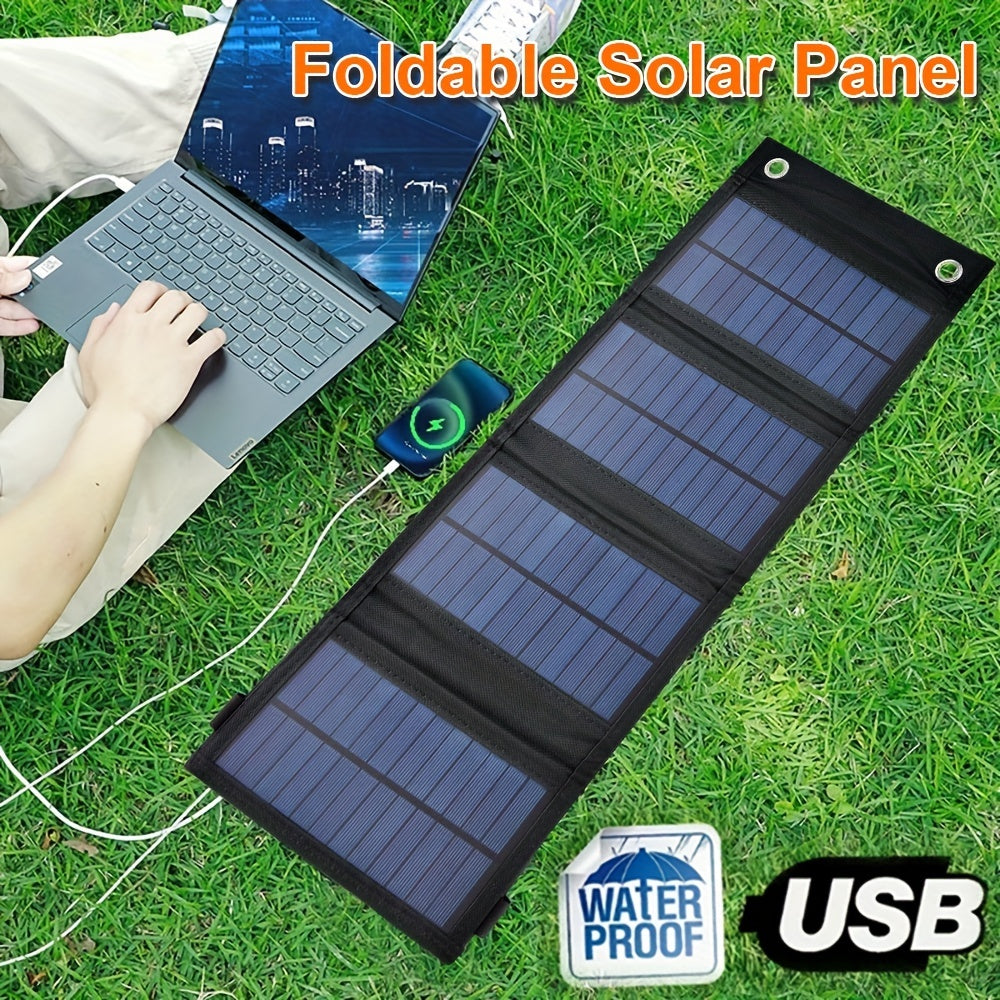People always severely underestimate how little power solar panels actually produce. In optimal conditions they get around 1000 watt per square meter, but are only around 20% efficient. So that means 200 watt produced at the panel. Once you convert that into something useable and transport it to where you need it, you'll probably lose another 5 - 10%. And that's a square meter, that's more than you can comfortably carry. Think a flat panel of around 2 meters in length and 0.5 meters wide and lifting that above your head, pointed perfectly at the sun.
And the reality is, most solar panels even in permanent installations don't experience perfect conditions. They don't track the sun, so most of the time they aren't perfectly aligned to catch all that energy. They are most likely never aligned perfectly, or if they are just a few days out of the year for like an hour a day. The sun isn't always out, not just because you know night time, but also because of clouds and other weather or human related stuff. Lots of times there are shadows that prevent optimal workings. Dust and grime also plays a part. But another thing is temperature, solar panels are rated at around 20 degrees C. But when you put a black thing in full sun, you know it's going to get scorching hot. This also reduces the amount of energy you can usefully extract from the sunlight as well.
The annoying thing about solar panels is they aren't linear at all. It isn't like when conditions are 80% from optimal, they produce 80% of the power. No, usually it's more like 60%. And once you drop below 40% of optimal, you just produce basically zero. With a bit of effort this can be improved upon. For example I use microinverters which can regulate each panel individually, but even then it's not great. And that's with state of the art panels, which are very fragile, so they have a sturdy metal frame, a very tough plastic backing and a big ass layer of glass on top to protect them. If you get those more sturdy thin and light panels, you'll be lucky if they get 15% efficiency (most likely a lot less).
So putting solar on anything that isn't a permanent installation is usually pointless. It's way too hard to get those ideal conditions and the panels aren't very good to start with. If it's moving, it's hard to point at the sun all the time. Exceptions are maybe a small panel on the top of a campervans, which is probably the best case for a mobile installation and gets just a little bit of energy. But only if it doesn't disrupt the wind profile of the van, otherwise it probably costs more in gas to push it along at high speed than it ever delivers back in electricity. One of those small foldable panels can also be useful when hiking for example. You can carry it collapsed on your back and if you take a break, you can fold it out, point it at the sun and get some useful energy for a couple of hours while you get some rest. Putting it on when hiking would be pointless, as it would be bulky when folded out, usually not pointed at the sun and under cover of trees for example.
Maybe the technology will improve in the future, but for now any useful personal solar is very niche.


